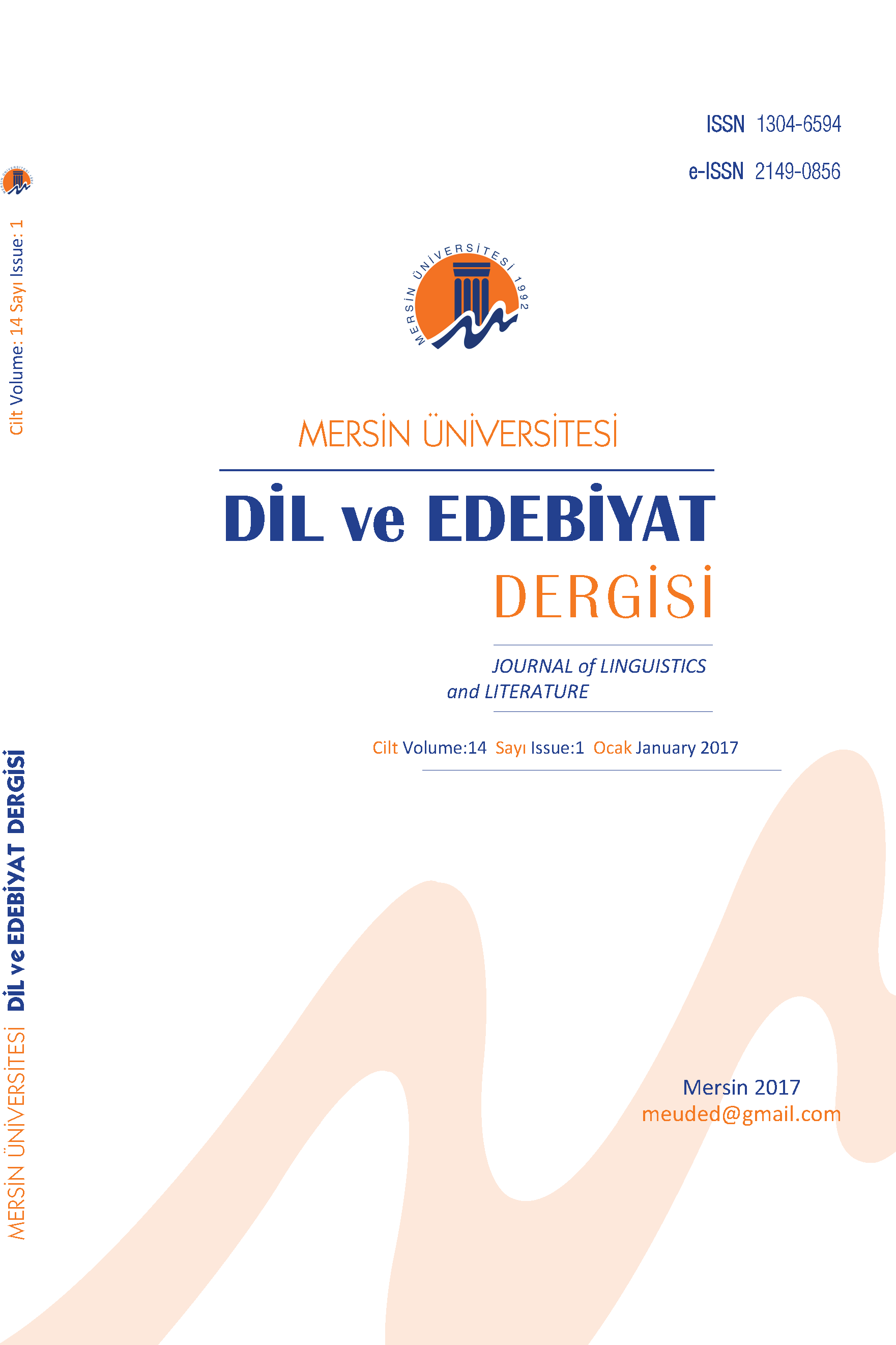The Effect of Background Knowledge on Children’s Comprehension
In this study, we examined whether readers use different processing strategies for different texts. Seventeen sixth-grade primary school students participated. Each participant completed a think-aloud process and a free-recall process by reading two texts. The data obtained were analyzed qualitatively. The results indicated that the comprehension strategies of the readers changed according to the text being processed. When the readers processed a text about which they had strong background knowledge, they could monitor their comprehension process more efficiently and render a more coherent reconstruction of the texts.
Anahtar Kelimeler:
-
___
- Anderson, R. C., Reynolds, R. E., Schallert, D. L. & Goetz, E. T. (1977). Frameworks for comprehending discourse. American Educational Re- search Journal, 14, 367-381.
- Ballstaed, P. S. & Mandl, H. (1984). Elaborations: Asessment and analysis. In H. Mandl, N. L.
- Stein & T. Trabasso (Eds) Learning and comprehension of text (pp. 331-353). New Jersey: Lawrence Erlbaum Associates.
- Celce-Mercia, M. & Olshtain, D. (2000). Discourse and context in language teaching: A guide for language teachers. Cambridge University Press.
- de Beaugrande, R. (1984) Learning to read versus reading to learn: A discourse processing approach. In H. Mandl, N. L. Stein & T. Trabasso (Eds). Learning and comprehension of text (pp. 159-192). New Jersey: Law- rence Erlbaum Associates.
- Graesser, A. C., Singer, M. & Trabasso, T. (1994). Constructing inferences during narrative text comprehension. Psychological Review, 101, 371- 395.
- Halldorson, M. & Singer, M. (2002). Inference process: Integrating relevant knowledge and text information. Discourse Processes, 34, 145-161.
- Henson, K. T. (2001). Curriculum planning: Integrating multiculturalism, con- structivism, and education. Boston: McGrow Hill.Landry, K. L. (2002). Schemata in second language reading. The Reading Matrix, 2(3). http:// www.readingmatrix.com/archives/archives_vol2_no3.html.
- Laing, S. P. & Kamhi, A.G. (2002). The use of think-aloud protocols to com- pare inferencing abilities in average and below-average readers. Jour- nal of Learning Disabilities, 35, 436-447.
- Long, L. & Bourg, T. (1996). Thinking aloud: telling a story about a story. Discourse Processes, 21, 329-339.
- Long, L., Seely, M. R. & Oppy, B. J. (1996). The availability of causal infor- mation during reading. Discourse Processes, 22, 145-170.
- Magliano, J. P. & Millis, K. K. (2003). Assessing reading skill with a think- aloud procedure and latent semantic analysis. Cognition and Instruc- tion, 21, 251-283.
- McCormick, T. W. (1988). Theories of reading in dialogue: An interdisciplin- ary study. University Press of America.
- Narvaez, D., van den Broek, P. & Ruiz, A. B. (1999). The influence of reading purpose on inference generation and comprehension in reading. Jour- nal of Educational Psychology, 91(3), 488-496.
- Oliva, P. F. (2001). Developing the curriculum. New York: Longman.
- Oster, L. (2001). Using the think-aloud for reading instruction. The Reading Teacher, 55(1), 64-69.
- Pressley, M. & Afflerbach, P. (1995). Verbal protocols of reading: The nature of constructively responsive reading. Hillsdale, NJ: Erlbaum.
- Richeit, G., Schnotz, W. & Strohner, H. (1985). The concept of inference in discourse comprehension. In G. Richeit & H. Strohner (Eds) Inferences in text processing (pp. 3-49). Elsevier Science Publishers B.V.
- Singer, M. (1990). Psychology of language. New Jersey: Lawrence Erlbaum Associates.
- Suh, S. & Trabasso, T. (1993). Inferences during reading: Converging evidence from discourse analysis, talk-aloud protocols, and recognition priming. Journal of Memory and Language, 32, 279-300.
- Thomas, K. F. & Barksdale-Ladd, M. A. (2000). Metacognitive process: teach- ing strategies in literacy education courses. Reading psychology, 21, 67-84.
- Trabasso, T. & Magliano, J. P. (1996). Conscious understanding during com- prehension. Discourse Processes, 12, 255-287.
- van den Broek, P., Lorch, Jr., R. F., Linderholm, T. & Gustafson, M. (2001). The effect of readers’ goals on inference generation and memory for texts. Memory and Cognition, 29, 1081-1087.
- van Dijk, T. A. & Kintsch, W. (1983). Strategies of discourse comprehension. New York: Academic Press.
- Wade, S. E. (1990). Using think alouds to assess comprehension. The Reading Teacher. 43(7), 442-451.
- Zwaan, R. A. & Brown, C. M. (1996). The influence of language proficiency and comprehension skill on situation model construction. Discourse Processes, 21, 289-327.
- ISSN: 1304-6594
- Yayın Aralığı: Yılda 2 Sayı
- Başlangıç: 2004
- Yayıncı: Mersin Üniversitesi
